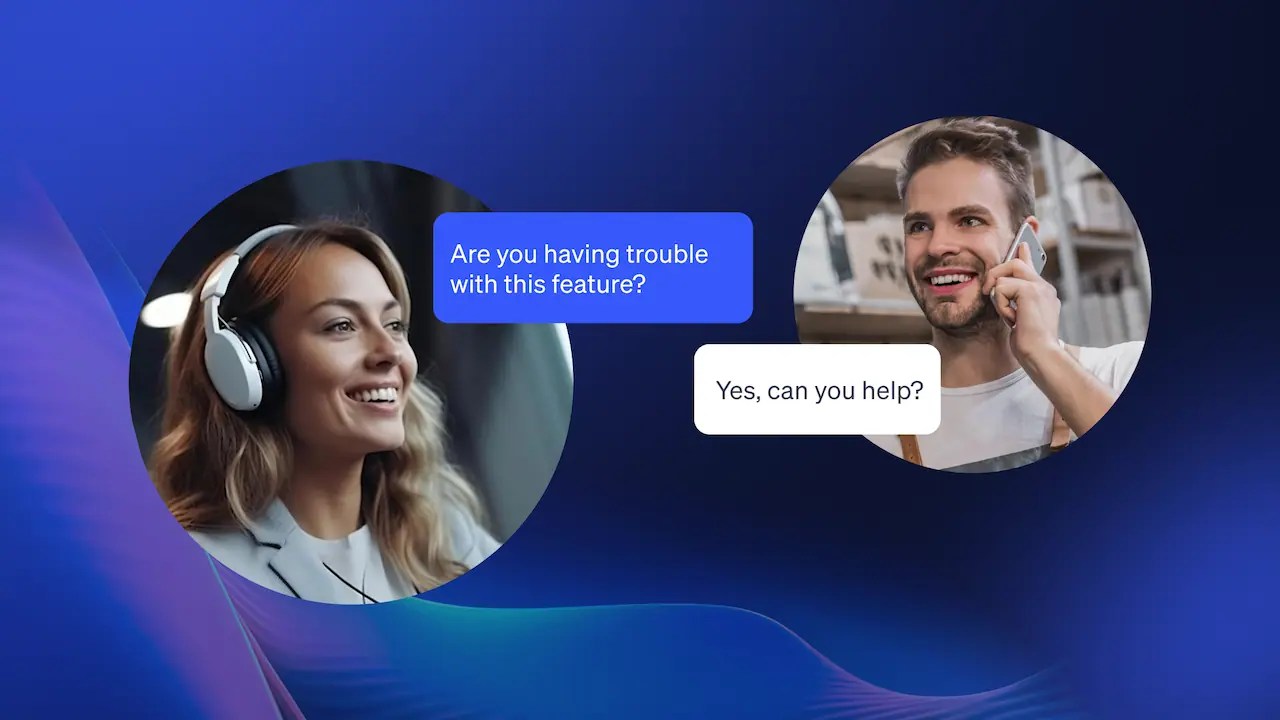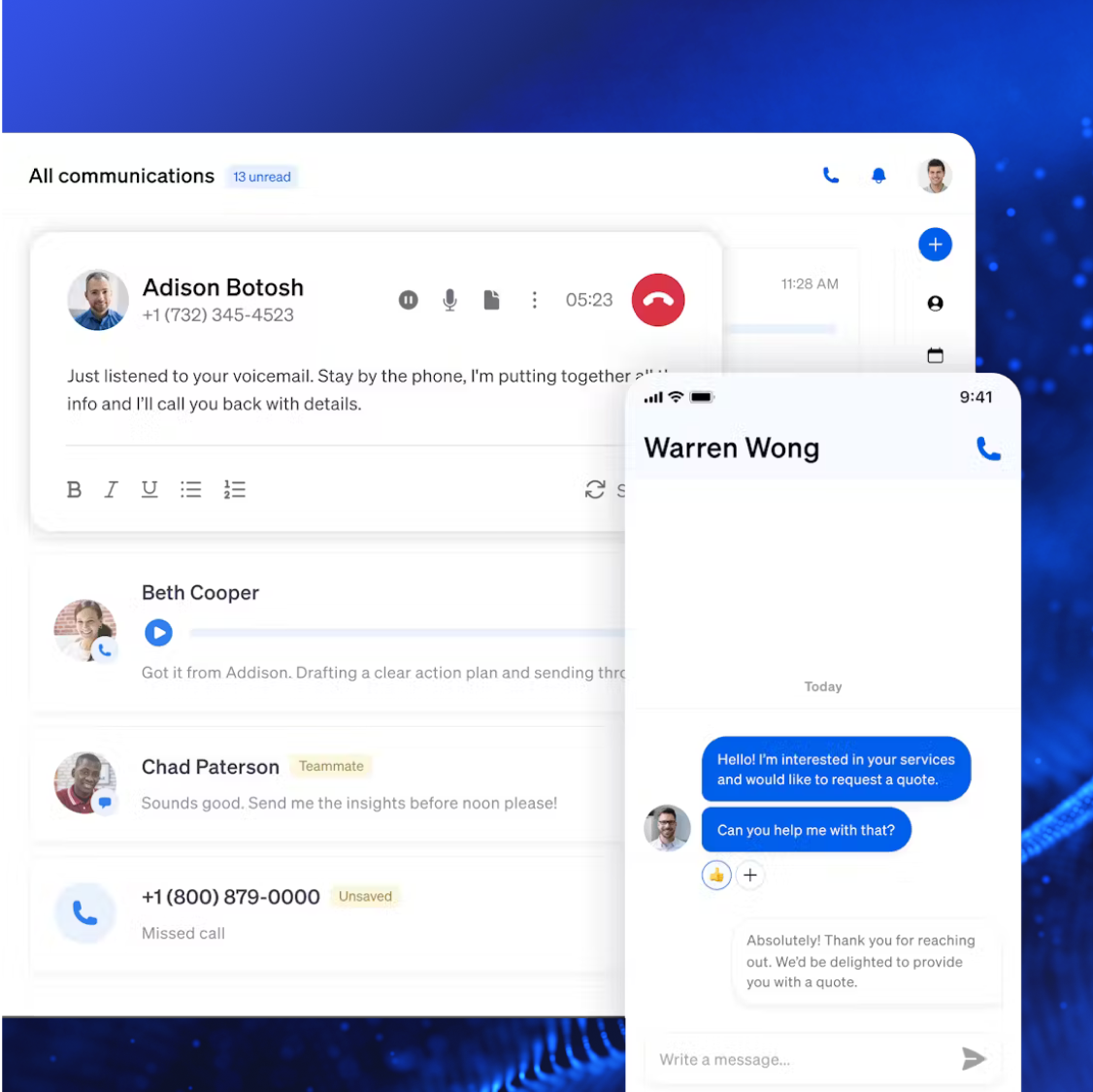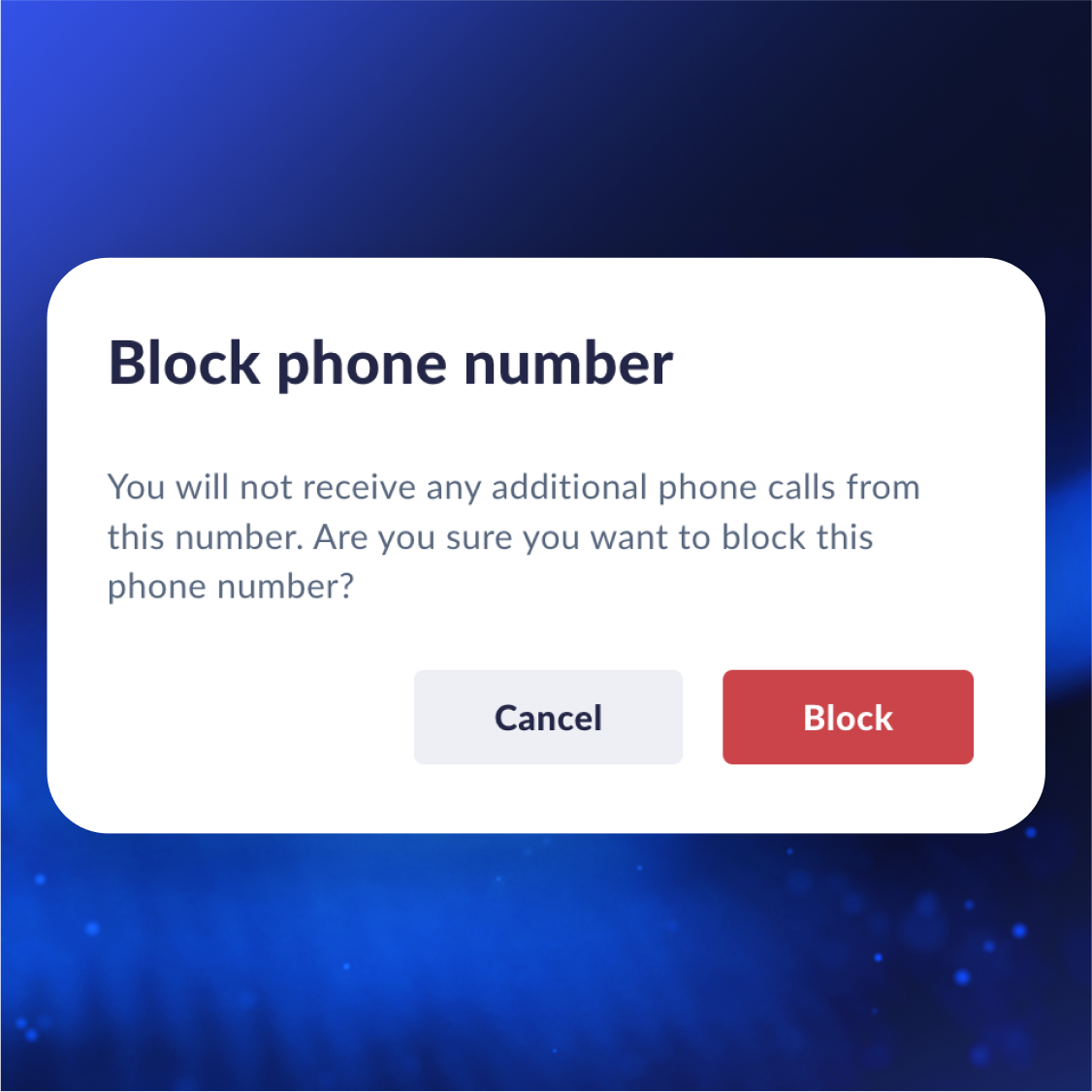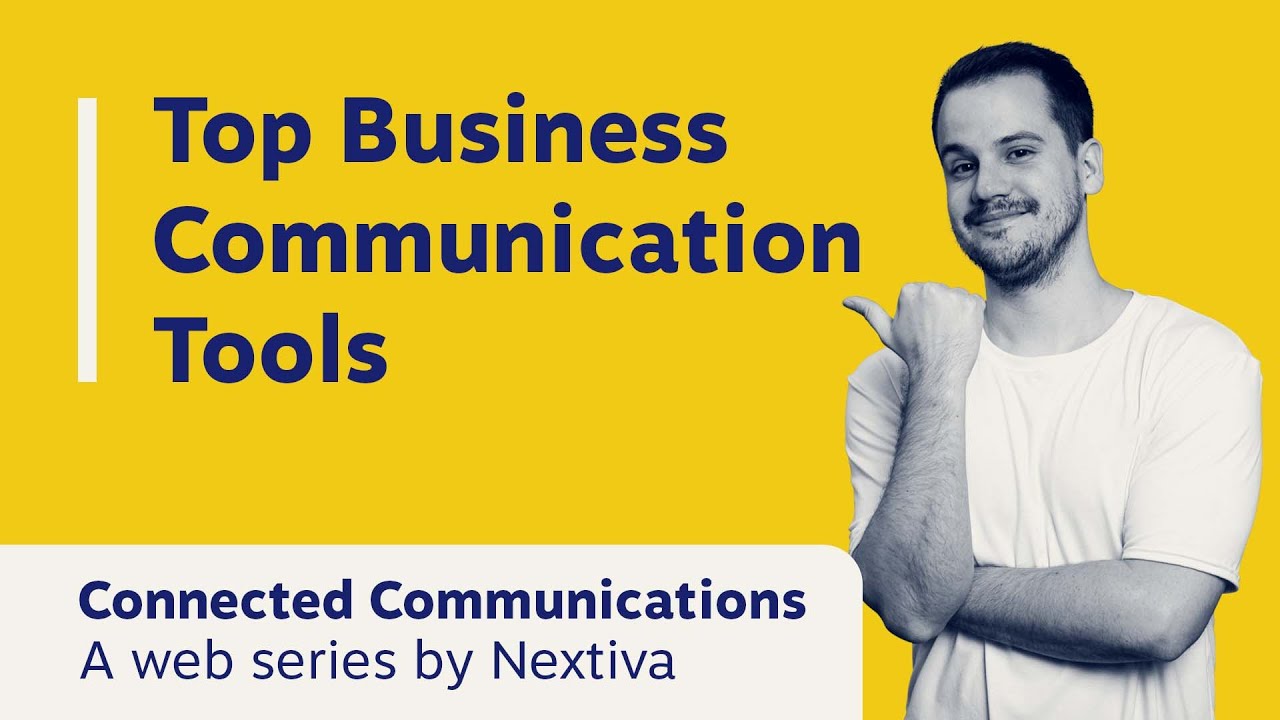Objections are a natural part of life. But in sales, they carry more weight.
They can be the difference between your reps meeting their quotas or falling short of company revenue targets. But with the right approach, sales professionals can turn these obstacles into opportunities.
It’s all about reframing objections, understanding the customer’s point of view, and responding in a way that addresses their concerns while highlighting the value of what you’re offering.
In this guide, you’ll read about the 10 most common customer objection types, how to overcome them, and which tools to use to make the job easier for your reps.
What Are the Most Common Objections Salespeople Run Into?
Here are 10 of the most common types of sales objections you might face:
1. Price objections
Price objections are often the most immediate and understandable complaint from customers. They include statements like:
- “It’s too expensive.”
- “I can get a similar product/service for cheaper elsewhere.”
- “I don’t see the value in spending that much.”
But it’s not always about the actual price tag. Pricing concerns often boil down to a perceived mismatch between the cost and the value of your product or service.
2. Budget constraints
When it comes to customer concerns about budget, some common statements include:
- “We don’t have the budget right now.”
- “I need to wait for the next budget cycle.”
- “We’ve already allocated our budget elsewhere.”
While this type of objection could reflect actual financial limits, it could also be about how potential customers choose to allocate their funds.
These statements aren’t necessarily outright rejections or deal-breakers but hints. Maybe the client needs more flexible payment options, or maybe your rep needs to demonstrate the ROI of your offering more clearly.
Having open dialogue during sales conversations gives you a chance to understand the prospect’s budgeting process and timeline. So even if you can’t overcome the immediate hurdle, you’ll set yourself up for future conversations and a long-lasting relationship.

“If you set the foundations right, the prospect will come around in the future. One of our current buyers couldn’t invest in our product due to budget constraints. But the original sales pitch was so good that he came back after a year when he did have the budget.”
1. Need or urgency
With cold outreach, leads don’t always come to you. Some need or urgency-based objections include:
- “I don’t need this right now.”
- “We’re happy with our current solution.”
- “This isn’t a priority for us at the moment.”
In these cases, the problem could be that the prospect doesn’t fully see how your product or service can benefit them or is better than their current solution.
The key to overcoming these objections is being good at spotting hidden needs or future problems that a prospect might not think about. With this approach, you’ll show how choosing your product now can bring benefits down the line or prevent potential issues.
4. Authority or decision-making hurdles
Some objections related to the decision-making process include:
- “I need to consult with my team/boss/partner.”
- “I’m not the decision-maker on this.”
- “We need to have a meeting to discuss this further.”
These roadblocks usually surface when the person you’re talking to is part of a bigger decision-making team or when there are a lot of people involved in the buying process. Sales reps need to win over the person they’re chatting with while giving them the ammo they need to go back and convince the rest of their team.
In other words, you have to identify and empower your champion.
5. Trust and credibility
If trust and credibility are areas of concern for your prospect, you might hear some statements like:
- “I’ve never heard of your company.”
- “How do I know your product/service will actually work?”
- “Can you provide some references or case studies?”
- “This sounds too good to be true. What’s the catch?”
These objections typically stem from a lack of familiarity with your company or concerns about the track record of your product or service.
In these situations, it’s crucial to reassure and provide concrete evidence of reliability and customer success. (More on how to guide prospects with the right content later.)
6. Satisfaction with current solution
If your prospect is happy with their current solution, they might tell you:
- “We’re already working with another company.”
- “We’ve been using our current solution for years and don’t want to change.”
- “I’m not convinced your solution is better than what we currently have.”
Facing this kind of objection usually means diving deeper into your prospect’s specific needs and pain points. It’s also important to know where you differentiate from the competition, even down to specific feature sets.
It’s about asking the right questions to uncover any hidden inefficiencies or limitations they might not be aware of with their current solution.
7. Lack of understanding
Here are some common objections you might hear if your prospect doesn’t fully understand your offering:
- “I don’t see how this fits into our workflow.”
- “I don’t understand how your product/service works.”
- “Can you explain the benefits of this again?”
This type of objection usually pops up when there’s a gap in communication or understanding. It’s not a brush-off but a positive sign that they’re interested enough to seek clarity. These objections are often the easiest to tackle. It’s a matter of breaking things down and connecting the dots for them.
8. Contractual or commitment issues
When facing objections about existing contracts or concerns over commitment, you might encounter statements like:
- “We’re locked into a contract with another provider.”
- “I’m concerned about the long-term commitment.”
- “What if we decide to cancel or change our minds?”
It’s natural for prospects to worry about getting tied down or what happens if things don’t work out. In this case, your goal is to offer reassurance and flexibility. Emphasize any trial periods, satisfaction guarantees, or easy exit clauses your service might have.
Discussing the long-term benefits and support that accompany your product is also helpful, showing that the commitment is worthwhile.
9. Perceived lack of features or benefits
When prospects feel that your product or service doesn’t meet their specific needs or match up to competitors, you might hear objections like:
- “Your product/service is missing a specific feature we need.”
- “How does your solution compare to [competitor’s solution]?”
- “I don’t see any features that stand out.”
Listen closely to your prospect’s needs and respond (or quickly follow up) with tailored information. If there are features your product lacks, discuss upcoming updates or alternative solutions you offer.
Comparing your solution directly to competitors can be tricky, but focus on what sets your product apart — unique features, better customer service, or overall value.
10. Timing
If your prospect’s issue is timing, you could hear something like:
- “We’re too busy to implement this right now.”
- “I don’t have time for a meeting/demo at the moment.”
- “Can we revisit this next quarter?”
- “I don’t want to make any changes during our peak season.”
These objections aren’t necessarily about the value of your product but about the prospect’s capacity to engage with it at the moment.
Here, empathy and flexibility are crucial. Offer to schedule a demo or follow up at a more convenient time, and show that you’re willing to work around their schedule.

It’s also a good idea to emphasize how your product can eventually save them time or help during busy periods. The goal is to align with their timeline while keeping the door open for future opportunities.
4 Ways to Address and Overcome the Most Common Sales Objections
Now that you’re armed with a list of the most common objections you might face, let’s dive into how to overcome them effectively. While you’re putting these techniques into practice, make sure to stress the importance of being genuine to your reps. Authenticity goes a long way in building rapport with your prospects.

“The best way to overcome any objection is to be human and authentic. In sales, anyone who’s not being themselves or overly salesy is an instant turn-off. Look at things through a lens of how you’re helping prospects. Put yourself in their shoes, and you’re more likely to form a trusting relationship that will lead to a sale.”

1. Implement call coaching
Coaching your reps, whether through live feedback or post-call analysis, lets you actively identify their strengths and areas for improvement. This way, you can offer practical advice to improve future sales interactions.
Here are two strategies you can use together for the best results:
Real-time feedback
Giving feedback directly during call monitoring lets you share instant, actionable insights to help reps adjust tactics immediately and see the effects during the conversation.
One way to do this is through whisper coaching, which allows supervisors to coach reps privately during calls without the prospect hearing. Just make sure the reps learn to blend in the advice smoothly without getting sidetracked or interrupting the call’s flow.

During call coaching, focus your feedback on areas like:
- Objection handling: Is the rep effectively identifying and understanding the customer’s concerns? Are they reassuring the customer and offering targeted solutions?
- Communication style: Evaluate the clarity, tone, and persuasiveness of the rep’s communication. Are they confident and clear in their delivery? Do they adapt their communication style to match the customer’s?
- Questioning techniques: Observe the quality of questions the rep asks. Are they open-ended questions that probe deep to understand customer needs?
- How reps build rapport: Notice how effectively the rep connects with the customer. Provide tips on improving empathy and building a stronger personal connection.
- Closing techniques: Pay attention to how the rep tries to close the deal. Are they assertive without being pushy?
Script optimization
Sales scripts help prepare your reps for various scenarios, especially objections.

“Of course, the script can change. Your responses will become better and better over time. But writing down the objections and responses not only gives you a quick and easy way to deal with them when they occur but also helps you prevent them.”
Here are some tips to help you prepare and optimize your scripts:
- Identify the most common sales objections: Start by gathering a list of the most common objections your team faces. You can do this by reviewing past call recordings or getting input directly from your sales team.
- Develop base scripts based on common objections: These should act as flexible guides, helping reps respond to frequent concerns while leaving space for personalization.
- Use real-time feedback for customization: During call coaching, use real-time feedback to tailor these base scripts to specific scenarios. Encourage reps to adapt their approach based on the prospect’s unique concerns or questions.
- Regularly review and update scripts: Make script optimization an ongoing process. Periodically go over and refresh the scripts based on new objections, changes in the market, or product updates.

2. Have your team brush up on their communication skills
Honing communication skills enables sales reps to be better listeners, respond clearly and persuasively, build trust, and adapt to various customer scenarios. These are all abilities that are essential in overcoming sales objections.
Here are three exercises you can do with your team to improve their communication skills:
Role-playing scenarios
Role playing with your reps allows them to practice responses and strategies in a low-pressure environment. This builds their confidence and improves their ability to think on their feet.
Here’s how to run more effective sessions:
- Simulate realistic sales interactions: Set up scenarios that mimic typical objections your reps face and use real objections from calls wherever possible. This makes the practice as relevant and practical as possible.
- Encourage different perspectives: Have reps switch roles, sometimes playing the customer. Putting themselves in the customer’s shoes can spark new ideas.
- Provide feedback continuously: After each role-play session, highlight what the reps handled well and discuss areas for improvement. Don’t forget to give your reps an action plan on how to improve.
- Practice regularly: Make role-playing a regular part of your training plan. Consistent practice helps reps internalize effective responses and learn from each other.

“The best way to get good at sales is to practice objection handling over and over again until your talk track is tight and you can respond confidently and subconsciously. This can’t happen without putting in the reps. Sales leaders can empower their people to put in the reps by providing a safe coaching environment where failure is encouraged and supported.”
Active listening training
To meet and even exceed their sales quotas, your reps need to know how to read between the lines and understand the root cause of the “no.” Then, they can respond in a way that resonates with the prospect’s specific needs and reframes their objections as opportunities for future discussion.
You can use the LAER model to help reps practice the steps of active listening:
- Listen: Encourage reps to give their full attention to the customer and avoid interrupting them.
- Acknowledge: Teach reps to acknowledge what the customer is saying and respond with verbal affirmations like “I see” or “I understand your hesitation.”
- Explore: Urge your sellers to explore the prospect’s concerns by asking clarifying follow-up questions. For example, if a potential client says, “I’m not sure if this fits our needs,” the rep can respond with, “Could you share more about what specific needs you’re looking to meet?”
- Respond: After implementing the previous steps, your rep can provide information that directly addresses the customer’s concerns.

“It’s important to understand the prospect’s reasoning so you can find an alternative. Do they have a very strict budget that we need to fit in? Maybe we can remove some of the features and find a solution that works for them. Have they found a cheaper solution? Let’s see the other offer and see how we can match it or improve on it.”
Confidence-building exercises
When you communicate clearly, showcase your expertise, and express genuine enthusiasm for your solution, it puts your prospect’s mind at ease and makes it easier for them to make a decision.
Here are some ways to help your people build confidence in themselves and your solution:
- Help reps know the product inside and out: Encourage them to use the solution themselves as part of their daily routine. This hands-on experience makes them more capable and confident in explaining or demonstrating its benefits and features to prospects.
- Implement peer-coaching: Pair reps for mutual feedback sessions and encourage them to practice pitching and objection handling with each other. Oversee the session and offer feedback on the content, delivery styles, and engagement techniques.
- Mentoring: Pair less experienced reps with mentors and have them review call recordings together to analyze communication styles and prospects’ objections. Mentors can even invite reps to listen in on live calls.
- Communication workshops: Organize workshops that tackle different aspects of communication, such as storytelling in sales, body language, and trust building.
3. Leverage data analysis
Data analysis helps you identify common patterns and objections so you can target sales training and adjust strategies effectively. You can achieve this by monitoring calls regularly, setting benchmarks for performance reviews, and conducting post-sales surveys.
Let’s look at these strategies more closely.
Monitor performance
Call monitoring lets you assess each rep’s performance during the sales process. You can pinpoint areas where they excel or need improvement, particularly in dealing with objections.
It also helps you recognize your top performers so you can provide real examples of effective objection handling that others can learn from.
Here’s how to monitor objection-handling skills effectively:
- Set clear performance metrics: Establish specific metrics to evaluate how well reps are handling objections. This could include the number of objections overcome, conversion rates post-objection, or customer satisfaction scores.
- Conduct regular review sessions: Schedule regular sessions to review call recordings with each rep. Use these meetings to provide constructive feedback and discuss strategies for improvement.
- Implement personalized coaching plans: Tailor development plans to address each rep’s unique strengths and weaknesses in handling objections.

Pro tip: With Nextiva Analytics, you can gamify performance tracking based on a metric of your choice. This helps you foster healthy competition and motivate your team, increasing engagement and helping improve performance.
Benchmark success
Establishing benchmarks for successful objection handling helps you set goals for the sales team and track progress over time.
For example, set a benchmark like “successfully overcoming objections in at least 50% of sales calls.” This gives reps a specific target to aim for. Then, use your sales CRM or tracking software to track progress against the benchmark regularly.
As your team improves, raise the benchmarks to challenge and grow their skills continually.

Implement post-sales surveys
You can use post-sales surveys to gather insight into how your reps handled objections and what influenced the customer’s decision to purchase. Use this information to adjust your scripts and refine your sales strategies and training materials.
Let’s say you discover customers consistently mention that a clear explanation of long-term benefits helped overcome their initial cost concerns. You can emphasize this approach in your script updates and focus on it during role-play exercises in training.
Just make sure to include targeted questions in your surveys about your reps’ objection-handling techniques. Ask customers what concerns they had and how well they felt your reps addressed them.

Pro tip: Customer surveys can come across as spammy if they’re not a natural part of the post-sales process. With Nextiva, you can send automatic surveys after interacting with customers and see their responses directly in the continuous conversation.
4. Guide prospects with the right content
The more relevant and comprehensive knowledge you provide your prospects, the easier it is to overcome their objections.
Here are four types of resources you can make available to them:
Educational content
Providing resources like blog posts, whitepapers, case studies, and FAQs lets you preemptively address common objections.
This approach educates your prospects and positions your brand as a knowledgeable and trustworthy source. It also frees up sales professionals’ time to focus on more complex tasks.
Here’s how to implement this effectively:
- Identify key concerns: Start by identifying the most common objections your sales team encounters. This will guide the type of content you need to create.
- Develop targeted content: Create content that specifically addresses these objections. For example, if price is a frequent concern, consider a whitepaper on the long-term ROI of your product.
- Regularly update FAQs: Keep your FAQs section updated with answers to common objections and questions. This should be a living document that evolves with customer feedback.
- Make content easily accessible: Ensure both your sales team and prospects can readily find this content. Consider creating a centralized repository on your site.

Social proof
Social proof helps reassure prospects that others have successfully benefited from your product or service, making it a more compelling choice. Using this form of validation is especially helpful in overcoming trust and credibility objections.
Here’s how to go about it:
- Collect customer testimonials: Reach out to satisfied customers and request testimonials detailing their positive experiences with your product or service. Ensure these testimonials are specific and authentic and highlight key benefits or results.
- Produce and display case studies: Highlight real-life examples of how your product or service solved specific customer problems and what results they achieved.
- Incorporate social proof throughout the sales cycle: Integrate testimonials, case studies, and reviews into your sales presentations, proposals, and follow-up communications. Just make sure they’re relevant to the prospect in terms of industry, scope, and function.
- Feature reviews: Showcase positive reviews from satisfied customers prominently on your website and marketing materials. Consider drawing from platforms like G2, Trustpilot, or other industry-specific review sites where your prospects are likely to research.
Consider connecting your prospect to one of your current happy clients. This gives your prospect a chance to hear directly from someone who’s already using and loving your product or service.

Interactive tools
Interactive tools provide hands-on experience for your prospects. This means they don’t just hear about your value proposition; they can actively see, evaluate, and understand it in a relevant context.
Prospects can more easily overcome their reservations about cost or practicality by directly exploring how your product can benefit them.
Here are some examples of interactive resources and what they’re best for:
| Tool | Purpose | Best For |
|---|---|---|
| ROI calculator | To provide a personalized financial analysis showing the potential return on investment when using your product or service. | Demonstrating long-term financial benefits and cost savings, beneficial for products or services with a significant upfront investment. |
| Product demos | To showcase how your product or service works in a real-world scenario. | Giving prospects a hands-on experience of your product’s features and benefits and illustrating how it solves specific problems or improves processes. |
| Configurators | To allow prospects to customize or configure a product to their specific needs or preferences. | Products with multiple variants or customizable features, helping customers visualize their ideal version and understand the possibilities. |
Personalized solutions
Personalizing your content shows your client you understand their unique needs and pain points. It lets people know you’re not just selling a product or a service — you’re giving them a solution to their exact problem. This builds trust and makes your solution more appealing.
Some examples of personalized solutions include:
- Customized emails, including introductory, follow-up, and offer emails
- Tailored proposals
- Targeted presentations
- Industry-specific case studies
Start by thoroughly researching your prospect’s industry, company, role, and even the latest news about their business. Then, focus your communications on how your offering solves their particular problems. Highlight features or aspects that are most relevant to them.
How a Unified Communications Platform Helps Sales Teams Close Deals
A reliable unified communications platform centralizes all your channels, from email and calls to instant messaging and video conferencing. Investing in the right sales tool can directly impact your team’s performance and your company’s bottom line.

Here are some of the product features that make that possible:
- High-quality audio: No more “Your audio’s breaking up” or “Sorry, I missed that.” A reliable communication platform lets your reps engage clearly with prospects, making handling sales objections easier.
- Call recording: Record conversations for training and review, which helps reps learn from past calls and improve their objection-handling skills.
- Live call monitoring and whisper coaching: This feature lets you offer real-time advice during calls and helps your reps address concerns more successfully.
- Call analytics: Receive insights into call patterns, identify common objections and successful strategies, and use the data to close more deals.
- Mobility and flexibility: With remote access, sales reps can make and receive calls from anywhere, ensuring they’re always ready to engage with prospects and tackle objections while on the go.
- CRM integration: This integration lets you track objections and customer histories so you can personalize your approach during each interaction, making every conversation count.
- AI-powered insights: Get real-time suggestions based on customer tone and sentiment analysis. Save time and money by focusing on the most promising leads and optimizing sales strategies.
- Training and development: VoIP technology supports scalable training sessions and on-demand learning, allowing sales teams to access recordings, materials, and analytics anytime.
- Enhanced collaboration: Make it easier for sales teams to meet, work together, and share their winning strategies from anywhere.
Navigating Sales Objections? Nextiva Has You Covered!
Overcoming objections and securing successful sales can be difficult. But the right strategy and systems make handling these challenges much more manageable.
Here’s where Nextiva comes in.
Our cloud VoIP phone system, AI-powered sales tools, and advanced automations allow your reps to communicate with customers wherever they are, get valuable insights into call performance, and boost sales.
As a team leader, you can use our call recording and analytics capabilities to see how your reps overcome objections and help set them up for success.

Boost your sales and drive revenue.
Your sales conversations + Nextiva’s selling tools will skyrocket your productivity.















 Marketing & Sales
Marketing & Sales 









